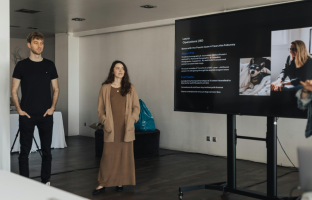Recently, the venerable organization Coca-Cola publicly announced that a project to hire more Black employees that stemmed from the settlement of a 2000 discrimination lawsuit had failed to achieve its objectives.
Along with many others, I had assumed that once a firm like Coca-Cola put its collective mind to something, it got it done. Apparently, not so fast.
Current and former Coca-Cola executives cited several factors that in 2010 began to erode the once-expanding proportion of Black executives and employees. Among them were complacency among project leaders after early successes, the distraction of a later effort to improve gender diversity, the disproportionate number of Black employees laid off in a major downsizing, a drop in the number of Black candidates in the pipeline, and weak retention of those brought into the organization.
The news set me to thinking about why else this could happen. With little evidence to support a theory, it occurred to me that one additional issue that hasn’t shown up in the press might be that of sequencing; in a sense, putting the cart before the horse.
When I think of diversity and inclusion, I think of them in that order. That’s the way they are typically stated. It implies that you first set out to achieve diversity by bringing in more people of color, and then take steps—through inclusion training, mentoring, fast-tracking, or whatever—to plug the proverbial “leaky bucket” of minority employees who leave an organization.
Is it possible that I have that sequence wrong? Or that it might be wrong to even think of it as a sequence of priorities?
What if initial efforts instead concentrated on inclusion? What if we tried to engage the employees we have, however monochrome they might be in background, before bringing in new people? This is not as simple as it sounds.
Inclusion is difficult. Research suggests that much of it does not lend itself to training. We can train managers to give “voice” to everyone in their organizations. What remains, however, is something I’ve elsewhere simplistically called attitude.
Over the years, our research has told us that the mark of a great organization is that it “hires for attitude, trains for skills.” How do we apply that here? It requires an effort to hire managers at all levels who can get behind the notion of inclusion. Research suggests that these people have “grown up,” lived, and worked with people of other backgrounds. These people are less likely to have the hidden biases that lead to a lack of diversity in hiring and employee recognition. How much emphasis should we place on that approach in our current recruiting?
Hiring for attitude and combining it with skills training to foster inclusion takes time, perhaps too much time to satisfy those impatient for the more immediate gratification of increasing numbers of minority hires and ringing the diversity bell.
Does an organization have to take steps to prepare for diversity? Is hiring people who support the contributions of people from different backgrounds a large part of the answer? If so, should organizations initiate efforts to improve diversity and inclusion simultaneously? How do we manage the complexity and time requirements to do so?
About the Author
James Heskett is the UPS Foundation Professor of Business Logistics, Emeritus, at Harvard Business School.
This article originally appeared in HBS Working Knowledge.
References:
Mahzarin R. Banaji and Anthony G. Greenwald, Blind Spot: Hidden Biases of Good People (New York: Delacorte Press, 2013).
Jennifer Maloney and Lauren Weber, "Coke’s Elusive Goal: Boosting Its Black Employees," The Wall Street Journal, December 16, 2020.





.png&w=80&h=80)

